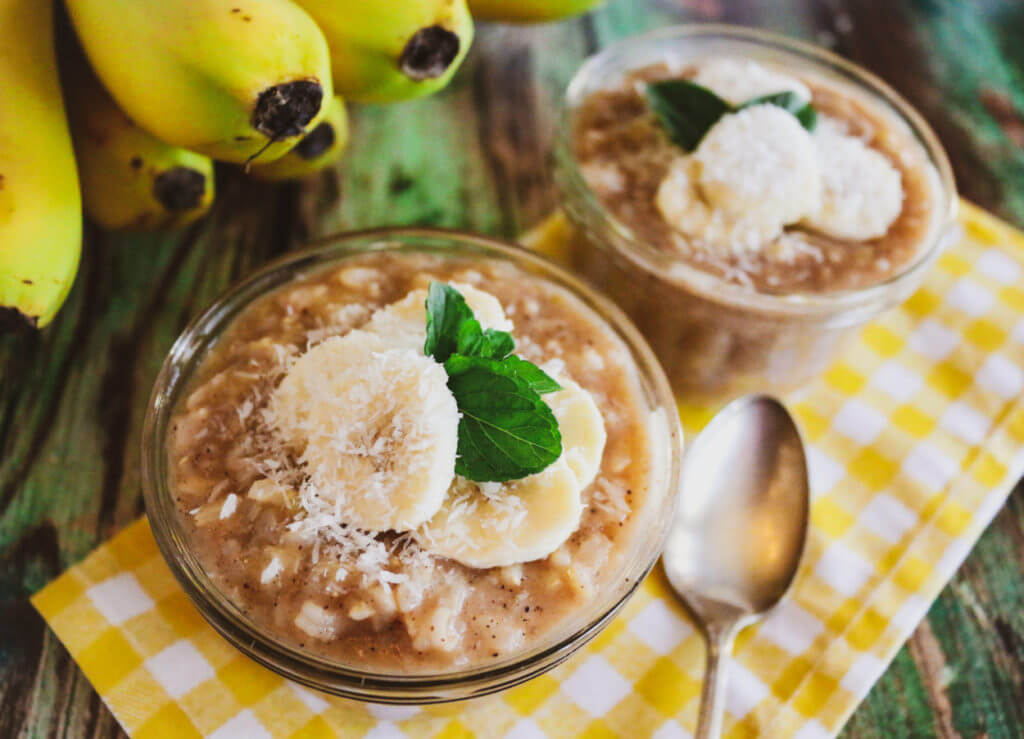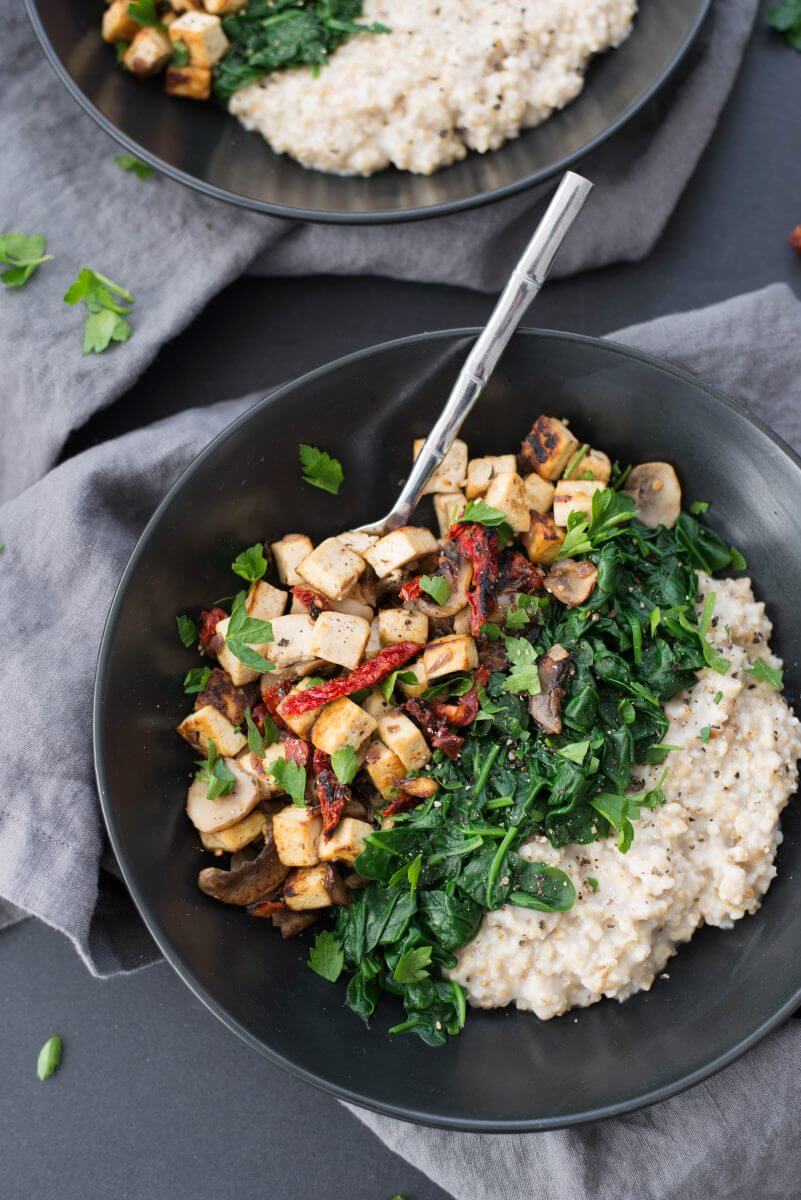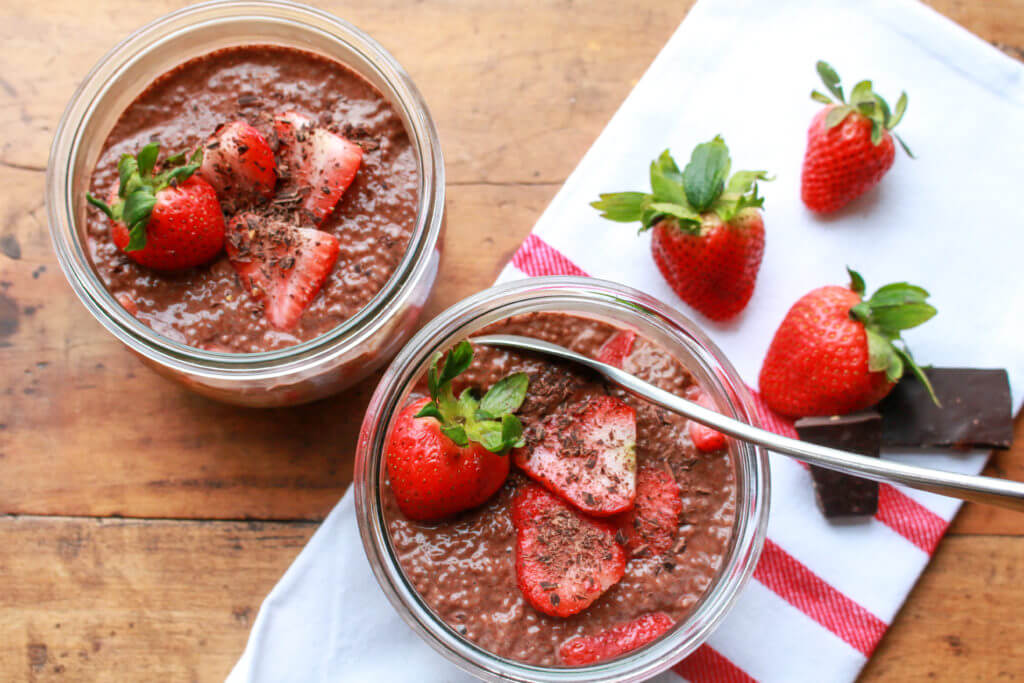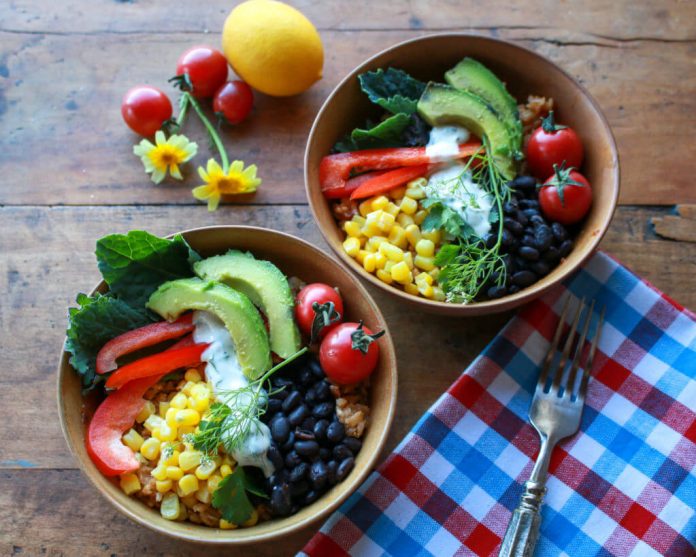If you’re eating a completely plant-based (vegan) diet, you already have your fair share of diet challenges by avoiding all animal foods, such as meat, dairy, and eggs. If you add gluten-free dietary restrictions to the list, then your dietary challenges just expanded. But have no fear! You can follow both a plant-based AND gluten-free diet with confidence, thanks to these nutrition tips.

While gluten-free eating has increased in popularity over the past several years, for many people it’s more than just a diet trend. If you have celiac disease or gluten sensitivities, gluten-free eating is a mandatory diet in order to feel and stay well; you have no choice but to avoid the protein called gluten found in wheat-related grains for such health reasons. In fact, the prevalence of celiac disease in the United States is 1 in 141 people. On top of that, others must avoid gluten or wheat due to gluten sensitivities or allergies to wheat. While it’s certainly not advisable to eliminate gluten in your diet without medical necessity, I hear from many people out there who must follow a gluten-free diet for health reasons, yet they also want to eat a plant-based, vegan, or vegetarian diet. And they wonder how best to achieve their health goals. It’s completely possible, with a bit of smart planning.
A healthy plant-based diet based on whole foods should be rich in whole grains, so that can be one clear trouble area. One of the main challenges of a gluten-free diet is avoiding the obvious addition of certain gluten-containing grains, such as wheat, rye, and barley. But many plant-based products may also include hidden gluten sources. These can be common ingredients and additives in processed foods that contain gluten. In addition, cross contamination in food service or restaurants, food manufacturing, and even your own household can render even naturally gluten-free products unsafe. Frankly, there are many products to watch out for, but living a healthy gluten free plant-based diet is still easily possible!

What is Gluten?
First up, let’s discuss what gluten really is. Gluten is a family of proteins found in grains like wheat, barley, spelt, and rye, wheat being the most common of the gluten-containing grains. Gluten is a protein complex formed when glutenins and gliadins proteins interact. Even though a plant-based diet may be a healthy lifestyle, you may not be able to tolerate gluten in the diet if you have celiac disease, a gluten sensitivity, or a wheat allergy. However, there are many healthy plant-based foods that are gluten-free that can be enjoyed by anyone with these types of conditions.

How to Plan for a Healthy Plant-Based and Gluten-Free Diet
One of the beauties of a plant-based diet is that it is based on whole plant foods—beans, lentils, vegetables, fruits, herbs, and spices. These are all naturally gluten-free! However, whole grains are also one of the main food groups on that list of whole plant foods I recommend you eat at every meal. While there are a few gluten-containing whole grains (all forms of wheat, including farro, spelt, emmer, kamut; rye, and barley) there are plenty of gluten-free whole grains on the list, including buckwheat, brown rice, wild rice, sorghum, amaranth, millet, and quinoa. If you base your eating style on whole plant foods, it’s quite simple to eat a gluten-free plant-based diet; all you do is swap out gluten-containing grains for gluten-free grains.
However, there are a few gluten-containing food products that are essential to a plant-based diet that you might have to watch out for (see the list below for a rundown). These include soy sauce, which can add so much umami flavor to plant-based dishes, though all you have to do is use gluten-free soy sauce. Tempeh can be made with gluten-containing grains, but you can find gluten-free varieties quite easily. Pasta and breads are often based on gluten-containing varieties, which can be easily swapped out for gluten-free types (I love pulse pastas!). In addition, recipes may call for flour for thickening or structure, but you can swap out corn starch for thickening, and a gluten-free flour blend for most recipes. One trick is to look for the gluten-free label on food products to assure that the product is gluten-free, and does not have risk of cross contamination.
It’s important to balance your diet with essential nutrients when you are on a gluten-free plant-based diet. Fortunately, there are many nutritious, whole plant foods packed with nutrients, such as fiber, protein, healthy fats, vitamins, minerals, and phytochemicals (with some smart supplementation) that can support your body while eating a gluten-free diet. Foods such as a quinoa berry bowl, chickpea tacos, steel cut oat porridge bowls, heirloom beans, nut butters, leafy green salads are all gluten-free and nutritious food choices. Planning for a healthful, vegan, and gluten-free diet may sound like a workload, but it’s quite easy.
12 Naturally Gluten-Free Plant-Based Staples
Here are a few naturally gluten-free, plant-based superstars of the diet, yet you may not even stop to think that they are gluten-free!
1. Peanut Butter: Rich in heart-healthy fats and a great source of protein, this economical staple is helpful for getting more protein and healthy fats in the diet.
2. Plain Tofu (unflavored): Another great source of protein, tofu (made from soybeans) is considered a high-quality protein because it contains good amounts of all nine essential amino acids. Just keep an eye out for seasoned varieties that may contain gluten.
3. Quinoa: On top of fiber, minerals, and antioxidants, versatile quinoa also contains all nine essential amino acids in balance, making it a great source of high-quality protein.
4. Chickpeas: This humble pulse is so dependable in the kitchen in hummus, curry, and salads, but it also offers a variety of health benefits, such as helping digestion, weight management, and disease protection.
5. Brown Rice: High in fiber, vitamins, and minerals, this super handy grain can go from stir-fries, curry dishes and grain bowls so easily.
6. Buckwheat: Consumption of this earthy, nutty grain (which is not related to wheat) has been linked to several health benefits, like improved blood glucose control and heart health thanks to the rich source of fiber.
7. Nutritional Yeast: This food source not only adds a “cheesy, umami” flavor to foods, it’s packed with nutrients which can help you meet your nutrient needs.
8. Lentils: Turn to this pulse as the perfect protein-rich replacement for meat in meals, such as Bolognese, “meatballs”, and veggie patties.
9. Almonds: Rich in fiber, protein, phytonutrients, and unsaturated fats, turn to these crunchy nuts for snacks, dairy products, baking, and salads.
10. Flax Seeds: This versatile food ingredient is packed with omega -3 fatty acids and fiber, making it a great addition to cereals, veggie-burgers, and baked goods.
11. Chia Seeds: Tiny yet powerful, chia seeds may help increase HDL levels (good cholesterol) due to their omega-3 fatty acids and fiber properties—plus they can help replace eggs in the diet.
12. Chickpea Flour: This flour is an excellent gluten-free, nutrient-rich alternative to wheat flour.

Plant-Based Foods That May Contain Gluten
Watch out for these popular plant-based foods, which may contain gluten. Check the labels and look for the gluten-free certification just to make sure. Since the grains wheat, rye, and barley can’t be enjoyed on a gluten-free diet, they may be an ingredient in many plant-based foods—even the flavoring or sauces may contain these ingredients. This is a partial list only.
- Wheat: In all its forms (emmer, spelt, farro, bulgur, couscous), this grain contains gluten
- Rye: This grain also contains gluten.
- Barley: This grain also contains gluten.
- Tempeh: This fermented soy grain cake may include gluten, however some brands use a different grain.
- Veggie Burgers: Some veggie-burgers contain ingredients that have gluten, however many brands are gluten-free.
- Seitan: This traditional plant-based protein is basically made entirely of gluten!
- Flavored Tofu: While tofu itself is gluten-free by nature—it’s made of curdled soymilk—seasoned varieties, such as baked or tofu cutlets, may have additives that contain gluten.
- Whole Grain Breads: Most whole grain or multi grain breads are based on wheat flour. Look for gluten-free varieties.
- Crackers: Many common crackers contain gluten, but look for those made with seeds and gluten-free grains.
- Soy Sauce: Traditional soy sauce contains gluten, but look for gluten-free soy sauce (often called tamari).
- Beer: Most beers are made with malted barley, and sometimes wheat. However, you can find gluten-free beers based on other grains.
- Pasta, Noodles: Traditional pasta is made from wheat. Many Asian noodles are made from wheat too (i.e., soba). However, there are many types of gluten-free pastas now, such as those made from pulses (beans, lentils, chickpeas, edamame) and alternative grains (i.e., rice, quinoa).

Tips for Going Plant-Based and Gluten-Free
Try to remember a few key tips for creating a lifestyle that works for you.
- Read food labels carefully. Look for gluten-containing ingredients on the list, certified gluten-free labeling icons to verify the product is gluten-free, and allergen statements that will note the presence of wheat (it doesn’t mean the product is necessarily gluten-free, but helps you eliminate items).
- Look for gluten-free certified grains. Even though naturally gluten-free grains and flours (i.e., sorghum, quinoa, oats) are technically gluten-free, many are not because they were in contact with gluten-containing grains during farming, transporting, or processing.
- Avoid highly processed foods. The more processed the foods are, the more likely it might have a gluten-containing ingredient in it.
- Don’t eliminate whole grains from your diet! Just add gluten-free grains.
- Increase fruit and vegetable intake. Whole fruits and veggies are always gluten-free choices (unless they have added ingredients).

20 Plant-Based, Gluten-Free Products I Love
Try some of our top plant-based products (that are also gluten-free) that we are fans of.
- Amy’s Gluten-Free Soups
- Oatly Original Frozen Dessert
- So Delicious Original Coffee Creamer
- Impossible Burger (not including toppings or bun)
- Beyond Sausage
- Sunshine Original Veggie Burger
- Lava Yogurt
- Forager Sour Cream
- Kite Hill Cream Cheese
- Miyoko Butter
- Gardein Beefless Ground
- Ripple Milk
- Bobs Red Mill Egg Replacer
- Thai Kitchen Light Coconut Milk
- San J Organic, Gluten-Free Tamari Soy Sauce
- Nature’s Path Organic Gluten-Free Homestyle Frozen Waffles
- Taza Chocolate
- Daiya Gluten-Free Frozen Pizza
- Hillary’s Millet Medley
- Simple Mills Crackers
This blog is not sponsored.
Written by Sharon Palmer, MSFS, RDN with Fatima Deharo, Dietetic Intern.
For other guides on plant-based living, check out some of our favorites:
7 Steps to Go Plant-Based
My 5 Tips for Eating a Plant-Based Diet
Eating a Plant-Based Diet Doesn’t Have to Break the Bank
Achieve a Healthy Weight on a Plant-Based Diet
Main image: Chipotle Tomato Rice Power Bowl
References
Rubio-Tapia A, Ludvigsson JF, Brantner TL, Murray JA, Everhart JE. The prevalence of celiac disease in the United States. Am J Gastroenterol. 2012 Oct;107(10):1538-44; quiz 1537, 1545. doi: 10.1038/ajg.2012.219. Epub 2012 Jul 31. PMID: 22850429.
Bruso, J. (2018, June 11). The Challenges of Eating Gluten Free. Retrieved January 18, 2021, from https://healthyeating.sfgate.com/challenges-eating-gluten-3129.html
Ware, M. (2019, November 4). Lentils: Benefits and nutrition. Retrieved January 18, 2021, from https://www.medicalnewstoday.com/articles/297638#:~:text=Lentils%20add%20essential%20vitamins%2C%20minerals,their%20risk%20of%20heart%20disease.
Gluten-Free Diet and Food Reading Label Guide. (n.d.). Retrieved January 18, 2021, from https://celiac.org/main/wp-content/uploads/2017/07/Combined-Gluten-Free-Diet-and-Food-Label-Reading-Guide.pdf









